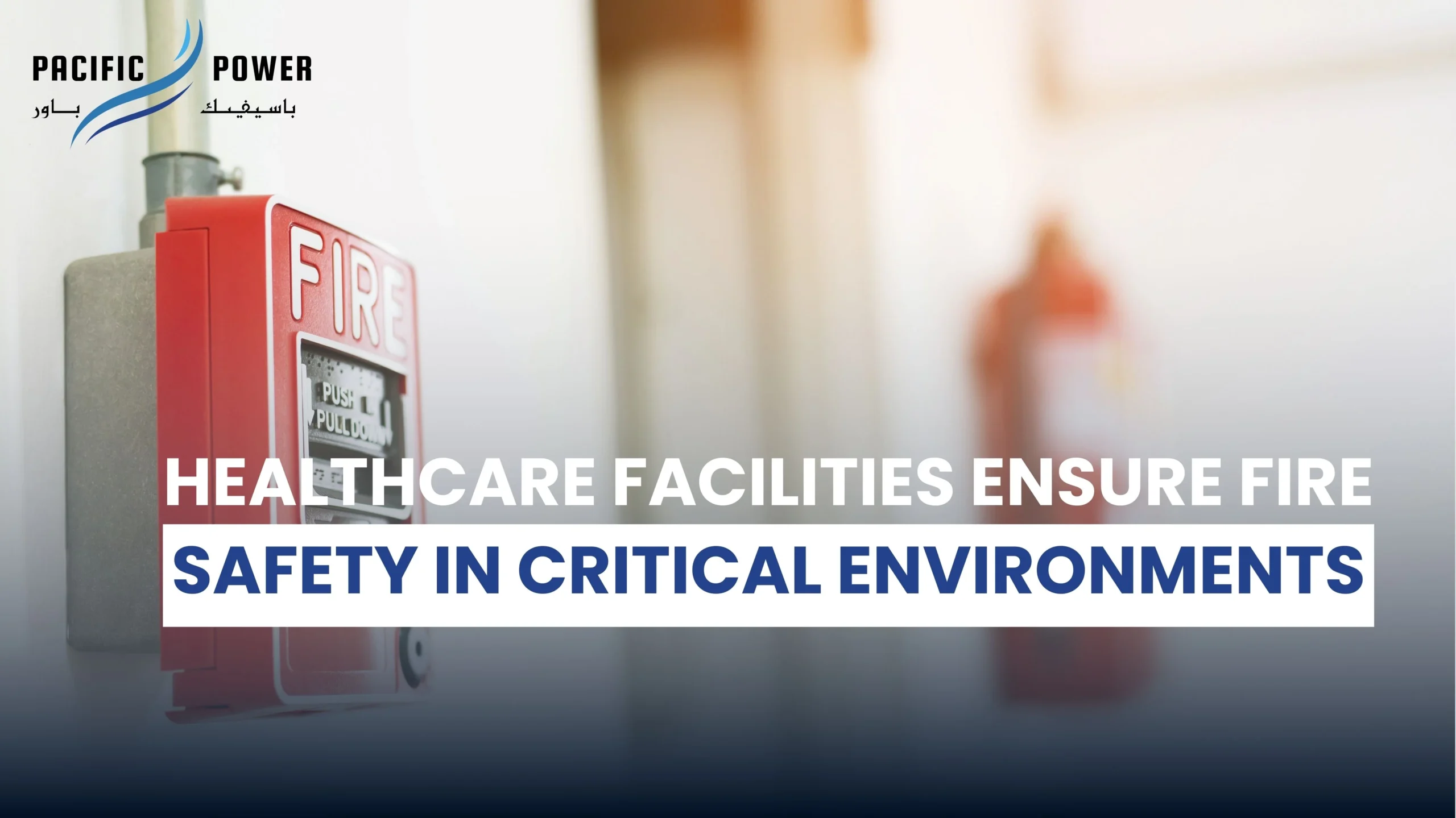
Table of Contents
How Can Healthcare Facilities Ensure Fire Safety ?
Fire safety is a top priority for healthcare facilities, where the well-being of patients, staff, and visitors is paramount. The fire risk can be significant in environments with medical equipment and flammable materials.
To mitigate this danger, healthcare settings must adopt comprehensive fire safety measures. Partnering with experts like Pacific Power, a certified fire safety consultant, can enhance these efforts.
They provide valuable insights and strategies tailored to the unique needs of healthcare facilities. This article will explore ways to ensure fire safety in critical environments, focusing on essential protocols and effective emergency strategies.
Essential Fire Safety Protocols for Healthcare Settings
Healthcare facilities should implement key fire safety protocols to safeguard everyone on-site. These protocols include regular fire safety equipment inspections, staff training, and creating a safety culture.
Facilities must develop clear procedures for fire emergencies and ensure that all employees are familiar with these guidelines. The focus should be on prevention and preparedness to minimize the risk of fire-related incidents.
Some Necessary Components of Fire Safety Systems
Fire safety systems comprise several critical components to protect healthcare environments effectively.
Fire Alarms
Fire alarms are a critical component of fire safety in healthcare facilities. They provide essential early warnings to alert occupants about potential dangers, allowing for timely evacuations. To ensure effectiveness, these alarm systems must undergo regular testing and maintenance.Additionally, it is vital to implement clear audible and visual signals, ensuring that all individuals, including those with hearing or visual impairments, receive alerts promptly. A reliable alarm system can save lives.
Fire Suppression System
Fire suppression systems are crucial for controlling and containing fires before they can escalate. Healthcare facilities have various options, including automatic sprinklers and specialized suppression systems tailored to their specific environments.
These systems should be installed strategically throughout the facility to maximize effectiveness. Regular maintenance and inspection are essential to ensure that the fire suppression systems function correctly and are ready to respond swiftly in a fire emergency.
Vital Emergency Evacuation Strategies
Establishing effective emergency evacuation strategies is vital for the safety of patients and staff during a fire incident. Facilities must create clear evacuation routes and procedures that are well-marked and unobstructed, allowing for quick and efficient escape.
It is essential to regularly review and update these strategies, ensuring they remain practical and accessible. Conducting routine drills helps familiarize everyone with the evacuation plan, ensuring that individuals know where to go and what to do in an emergency.
Staff Training and Routine Drills
Training staff is essential for adequate fire safety. Healthcare facilities should conduct regular training sessions to educate employees about fire hazards and safety protocols. Routine drills allow staff to practice evacuation procedures and identify any areas for improvement.
This preparation is crucial for ensuring everyone knows their roles and responsibilities during an emergency.
Further Insights on Fire Safety in Medical Settings
Healthcare facilities can take additional steps to enhance fire safety.
- Layout and Design of Their Buildings
Healthcare buildings should prioritize fire safety. Open floor plans can help with visibility, while designated fire zones can limit the spread of flames. - Use of Fire-Resistant Building Materials
Fire-resistant materials during construction can significantly reduce fire risks. These materials can slow the spread of flames and provide more time for evacuation.
- Installation of Fire Doors
Fire doors are essential in containing fires. These doors should be strategically placed throughout the facility to create safe zones where individuals can gather in an emergency.
- Staff Training
In addition to initial training, ongoing education about fire safety is vital. Keeping staff updated on the latest fire safety protocols ensures they remain aware of potential risks.
- Maintaining Clear Communication Channels
Communication is critical during a fire. Facilities should have systems in place to relay information quickly. This can include intercom systems or mobile alerts to inform staff and patients about evacuation procedures and safety measures.
Conclusion
Ensuring fire safety in healthcare facilities is a multifaceted approach. By implementing essential fire safety protocols, effective emergency evacuation strategies, and additional considerations, healthcare settings can create a safer environment for everyone.
Training staff and maintaining clear communication channels are critical to this effort. Regular drills and routine maintenance of fire safety systems are necessary to prepare for potential emergencies.
In doing so, healthcare facilities can protect patients and staff and minimize risks associated with fire hazards.

